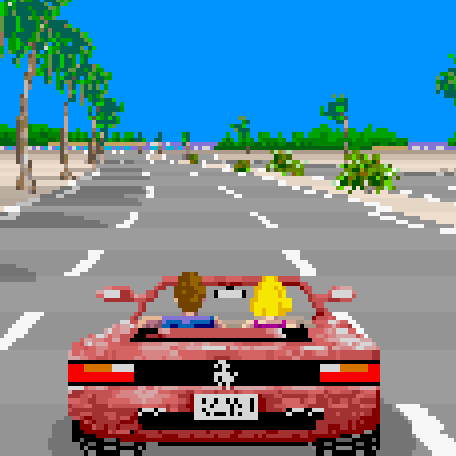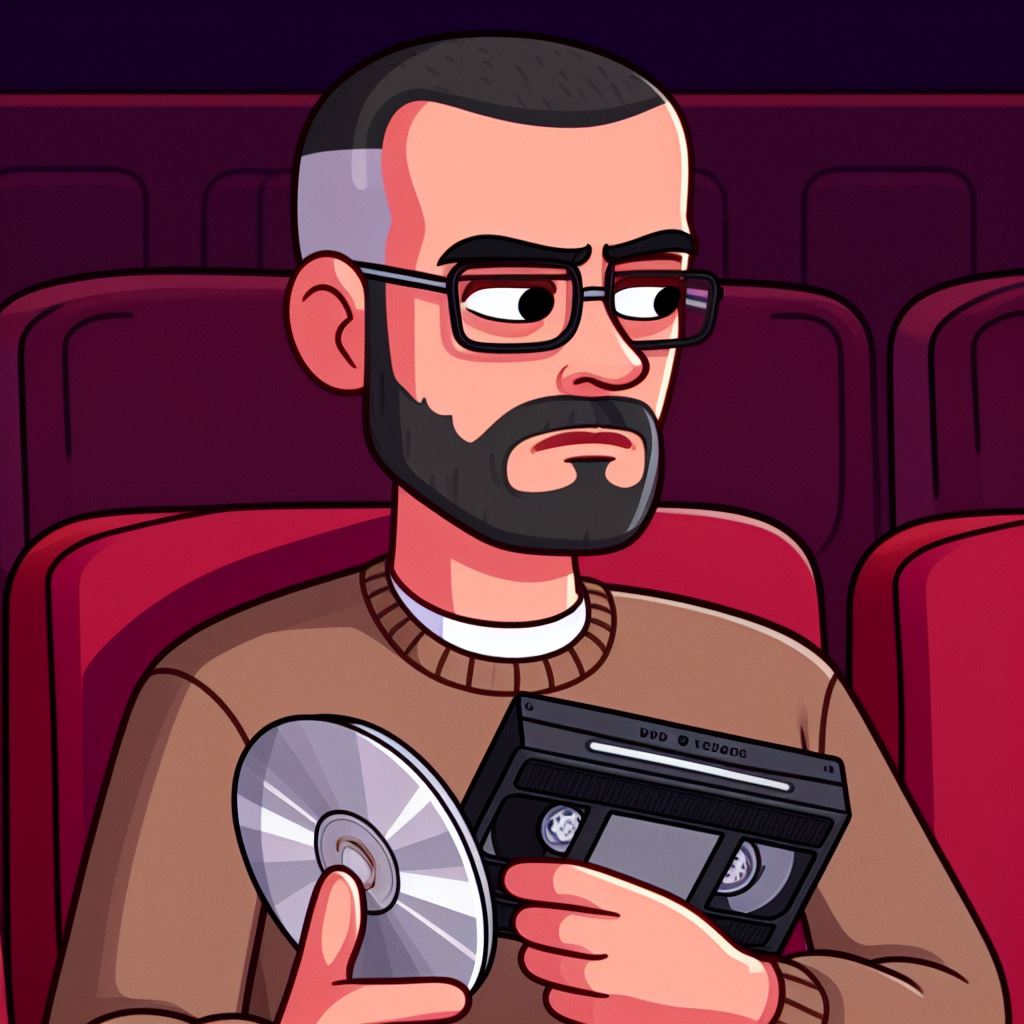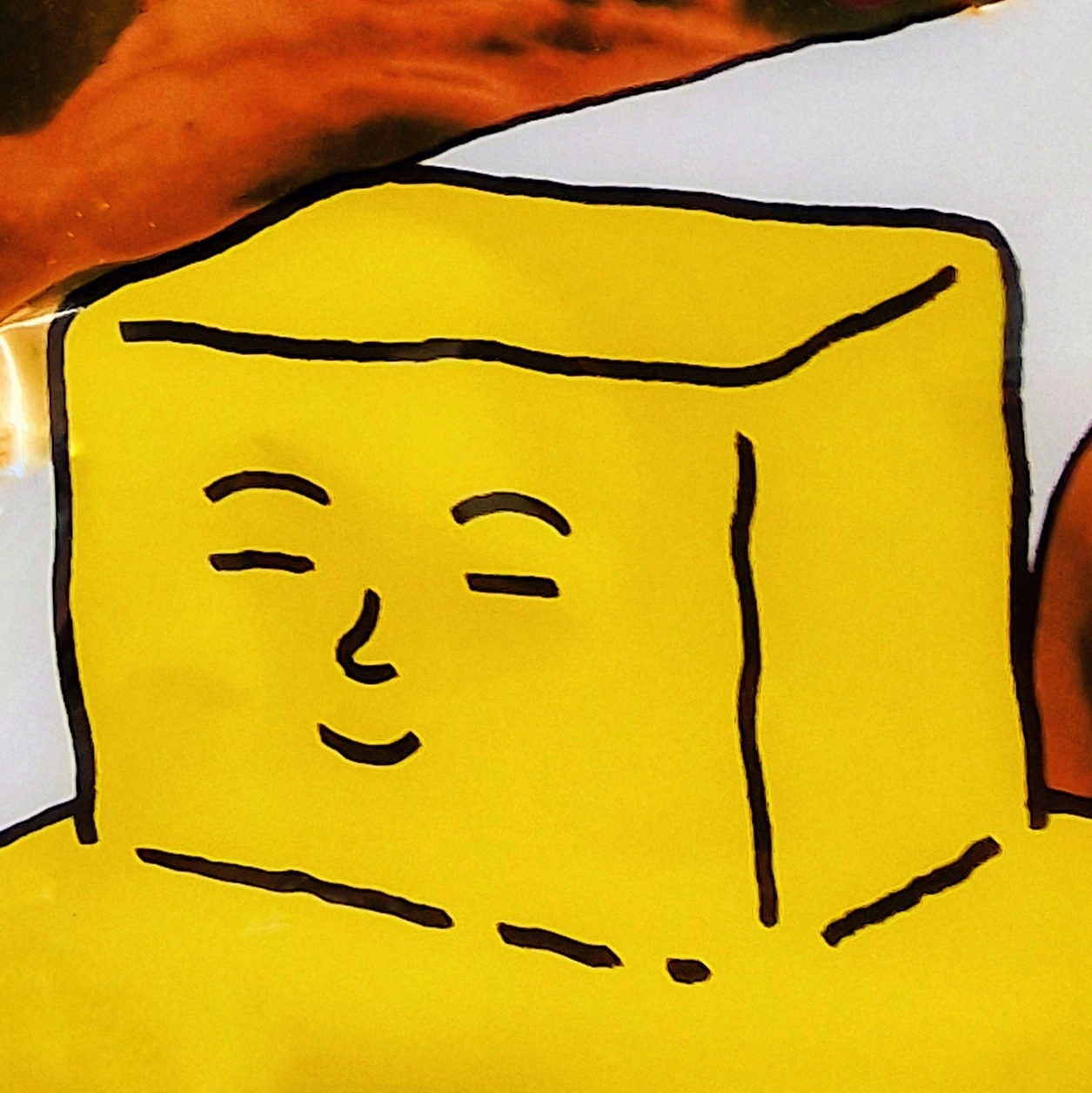Commando (released as Senjō no Ōkami in Japan, Wolf of the Battlefield) is a 1985 Capcom arcade shooter. Word to the wise: Commando isn’t based on the Schwarzenegger movie of the same name - that’s some false knowledge I’ve carried round with me for close to forty years… oh, how I’ve embarrassed myself at dinner parties…

Commando is a vertically scrolling run-and-gun shooter where you play “Super Joe”, a one-man army pitted against the endless ravenous hordes of whatever country was the mid-80s enemy du jour at the time. You have a gun with unlimited ammo, and a finite supply of grenades with which to dispatch your foes. While the gun can fire in any direction, the grenades only launch upwards, which creates a need for careful positioning in order to use them effectively.
The game is split into levels, and each level ends with a heavily fortified building that spews out a huge number of enemies that must be defeated before you progress.
It’s a cool game, one of the first of its kind. It’s also fast and frantic, and doesn’t really reward slow and methodical play. You’ve almost got to treat it as an auto-scroller, never slowing down, just moving forward and spraying your gun wherever you can. If you don’t, you risk being overwhelmed by the constantly respawning bad guys.
It was a genre defining title, spawning many imitators (such as Ikari Warriors, the home Rambo games, and countless others; as well as a 198 sequel, Mercs). It was also extremely tough, especially the unforgiving end-of-level sequences. A real coin muncher.
In terms of ports, it got more conversions than a corrupt third-world regime has cannon fodder mercenaries. And I’ve looked at them all… war is hell, man.
So, lock and load, we’ve got a lot to get through…

We begin this epic journey with a familiar friend: the Amstrad. But it’s not up here because it’s terrible, far from it. It’s actually a pretty decent conversion, albeit not as good as the Spectrum or C64. Like the Spectrum, it suffers a bit from its one-button joystick, meaning that grenades are fired by holding down the button, which leaves you a little vulnerable for a moment. I think I prefer the C64’s approach of using the space bar for this.
The graphics are bold and clear, if a little monotonous; the game is hard, but fair; and the sound is… okay. Overall, it’s fine. Not the best, not the worst.

The Spectrum port of Commando is good, seriously. It just looks bloody awful. Not sure why they chose yellow as the background colour, but they did and you end up feeling like you’re wading in custard. It’s not the only port to feel like this.
If you can ignore the stinky visuals, there’s a great game underneath. It is fast, similar in pace to the arcade and has a similar frantic feeling. It throws hordes of enemies at you, just like the arcade… no idea how the Spectrum keeps up! Bullets are very visible, making it feel fair, even the sound is okay.
Overall, a great effort!

I think C64 owners would claim Commando as their very own, and with good reason. It’s very much a C64 staple.
It’s the theme music, you see? A Rob Hubbard classic, famously knocked up in 12 hours. And it’s great! But beyond the awesome SID soundtrack, the game is amazing as well. Smooth, fluid, fair, fast, it just feels right. On the 8-bit micros, at least, it is the closest by far to the arcade.
You could, perhaps, argue that it is a little bit… brown. But hey, so was the original. And it worked for literally every Xbox 360 game, so I’m prepared to let it slide.
Well worth a look, even today!

We leave the well-trod paths of 8-bit machines and enter the hinterlands…
The BBC Micro, for those not raised in the UK in the 80s, was a machine that was only ever owned by the children of geography teachers. It was never meant to be a games machine, it was meant to be for learning or a tool for recreating the Doomsday book (don’t ask).
Nevertheless, it turned in a commendable effort on its Commando homework, a solid B-.
Yet another victim of the yellow backdrop curse, this effort is garish and bright. It is also pretty slow, with jerky movement. That limitation kind of changes how you play the game. It becomes more intentional, less frantic. You can take your time a little, plot out the best place to stand and fight. In that respect, it’s quite enjoyable.
So a reasonable effort, if a little… yellow.

Sadly, the same can’t be said about the MSX version, which isn’t so much a war hero, as a war crime.
It looks passable in still form, with colourful graphics that are reminiscent of the arcade. It has that old MSX thing of a multi-colour main sprite and monochrome enemies, but looks mostly fine. Sadly, it all comes apart when it moves… the main sprite jerks from character block to character block, the screen moves similarly badly. It’s like viewing Commando through a flashing strobe light. The music is discordant and jarring, and plays in half-hearted 20 second bursts before giving up. Really off-putting.
It’s a shame, because it has all the elements of the arcade in one form or another. They’re just put together in such a way that makes playing it feel like having a seizure.

Enough with the garish 8-bit ports, let’s take a look at what the 16-bit powerhouses can do…
The Amiga turns in a solid effort. Pretty boring really, leaving me very little to comment on. It’s Commando… slick, smooth graphics, solid controls, a nice rendition of the arcade music. It’s enjoyable to play, but doesn’t really push any limits…
If you want solid, authentic competency, this is the port for you. But where’s the fun in that?

Similar to the Amiga version, the Atari ST phones in another competent port. In fact, I actually prefer this version to the Amiga version. It feels looser, smoother, a bit faster maybe? Regardless, there’s not much in it, with both versions having near identical graphics. The ST music is a bit chippier, but it still sounds authentic.
Another great port!

Regular readers of these posts will know that what I value more than lazily applied raw power, is moxie. And this port has moxie in spades. It’s an Intellivision, for goodness sake! From 1979! It has 1K of RAM! This machine has no business running a game like Commando… and yet…
Okay, it doesn’t look much like the original, with the chunky colourful sprites being whittled back to one colour stick men. But it moves kinda like Commando and it sounds kinda like Commando and it plays kinda like Commando. All of it powered by sheer moxie alone!
It’s not the best port here by a long way, but it is perhaps the most impressive. Importantly, it’s also very playable, enjoyable even! It has moxie, see?

Now, there’s moxie and there’s wishful thinking, and the Atari 2600 (hailing from 1977) was more of the latter and less of the former. If the Intellivision port embodies the spirit of Commando, the Atari 2600 embodies the spirit of a two sentence description of Commando. It is super basic, super stripped back, and it doesn’t really work, sadly.
The graphics are limited, with yet more liberal use of yellow; the movement is perfunctory; the bullets frequently go missing and can’t be avoided, and it’s annoying to play rather than quirky.
There are good 2600 games, games that are enjoyable even today, but this isn’t one of them. Well, what do you expect? The console is basically just resistors!

Luckily for Atari console fans, the Atari 7800 version is actually quite good. It’s a proper grown-up console version, comparable to the NES port, and very playable. It has all the bits and pieces from the arcade, and adds pick-ups to give you a more powerful gun, or a knife to enable hand to hand killing (run into enemies).
It looks great and moves smoothly and, if you’re playing the original cartridge, it uses an extra POKEY chip to give enhanced sound (one of only two 7800 games to do so).

The NES version of Commando is probably the best of the bunch, possessing that slick console feel that leads to such great coin-op conversions.
Superficially, it’s a solid recreation of the arcade. It looks great, it sounds as good as can be expected, it is smooth, fast and frantic. It sometimes pushes the limits of the NES too far though, with the abundance of on-screen sprites causing some pretty epic sprite flicker. But you barely notice it in the heat of the action.
Like several other NES conversions (Rygar, Strider), this one adds a number of little extras to prolong interest. It has powerups that can be collected for points or to make your weapons more powerful. Also, hidden around the levels and revealed by a well-placed grenade throw, are ladders. If you climb these ladders down, you’re taken to a hidden bunker, containing either hostages, enemies or pick-ups. It doesn’t add a great deal to the game, other than the need to locate these ladders, and you could even argue that it detracts from the frantic pace. But it’s an interesting example of how developers tried to add a little bit extra to coin-op conversions back then.
So there you have it, Commando. If you want to experience it today, try the C64 or NES versions for realsies, or the Intellivision version for interest.
Keep 'em coming. Another great read thank you.
These are magazine level posts, great stuff.
I love C-64 graphics. All the ways they compensated for the low resolution and low memory, especially doing innovative things with the huge number of special characters the C-64 had.
Wow can’t believe the old Atari and Intellivision even had ports.
The old Intellivision was an interesting console, with a dialpad and spin disk for a controller and speech synthesiser add-on. I will never forget “B 17 Bomb b ber”
Bandits, 12 o’clock!
Uh-oh!
That was not the target!
You missed the C16 version! It’s nothing like the others, I added a couple of words here / !plus4@retrolemmy.com
Can’t believe I missed that one! Sounds like it made some interesting compromises.
Never played the game as it’s a bit before my time, but immediately had the C64 rendition of the theme playing in my head:
Here is an alternative Piped link(s): https://piped.video/watch?v=qrQuR1LHAVI
Piped is a privacy-respecting open-source alternative frontend to YouTube.
I’m open-source, check me out at GitHub.
the music is great! going all over the place in such little time! such whacky sorta solo!!
Great post. I played the Speccy version a lot back in the day. Although I was never anything other than very bad at it.
Great post!! Thanks for the love and effort of putting it all together!
This indeed made a pretty successful transition from the arcade to home. The gameplay didn’t necessarily rely on graphics. Multi directional, different attacks, decisions on who and when to engage. It wasn’t iconic, it fell a bit short, but it did do something’s really quite well.
That C64 Rob Hubbard high score entry tune still plays flawlessly in my head 35+ years later and leaves me misty-eyed…
These posts are fantastic, by the way! Thank you.
Edit: couldn’t help myself https://www.youtube.com/watch?v=hLp8ErRj8s0
I’m going to bet the colours on the spectrum were a result of porting from the c64 version.
I reckon they ported from c64 to cpc. Got the colour as close as they could. Then ported cpc to Spectrum and did the same. The result being the yellow colour.
Generally most 8 bit bigger games were ported like this and the spectrum was always the loser in the game. Graphically the spectrum was always challenged. But there were some games that were done properly and looked good (I’m thinking of the dizzy games as an example).
I’m not sure that’s the case…
A lot of the time, the C64 and Spectrum/Amstrad ports were done by different companies, in isolation. You’d often see the C64 go its own way, changing up levels and gameplay. While the Amstrad port was usually a lazy port of the Spectrum. You can often see the colour limitations of the Spectrum ported across wholesale to the Amstrad as well.
In the case of Commando, the Spectrum and Amstrad teams had some overlap and the games share some of the same DNA (see the title screen, for example), while the C64 was distinct. It doesn’t feel like a lazy Spectrum > Amstrad port though, so it has that going for it. The C64, as usual, feels like its own thing.
I stand corrected. I do know that the c64 almost always got the grade A treatment. I was always jealous of friends with one of those.
I always thought that as well, and was similarly jealous. But in doing these port comparisons, I’ve found that the C64 often got a really bad port. See my Bomb Jack post the other day, for example.
If you can look past the visuals and sound, the Spectrum ports often capture the feel of the arcade the best of all. It’s probably about 45-45-10 (C64-Speccy-Amstrad), with the Amstrad getting some rare gems like Renegade.
That’s odd in a purely programming way of thinking I’d have assumed it’d be easier to port from 6502 to Z80 since Z80 has a lot of instructions that have no direct equivalent and more registers. So porting from 6502 in a lazy way would in theory be easier (while netting a terrible result most likely) than the other way.
I cut my teeth on assembly programming on a Spectrum +3. I always thought the Z80s registers and extra instructions made things so much easier.
Often it was because the ports were given to different companies to do… one would get the Spectrum/Amstrad and another would get the C64. Also, the whole sound and graphics systems would need to be rewritten, given the Spectrum’s lack of hardware sprites or scrolling, or decent sound. Presumably it just made sense to build them separately.
Also in the long tail of how influential Commando was, note the two recent developments for the Sega Megardive: Papi Commando and Papi Commando Second Blood:
https://www.brokestudio.fr/product/papi-commando-second-blood-md/
Haven’t thought about this great game in decades. Adding to list of games to play again.
I used to love this game as a kid on my C64. Great memories
This is a great post!












